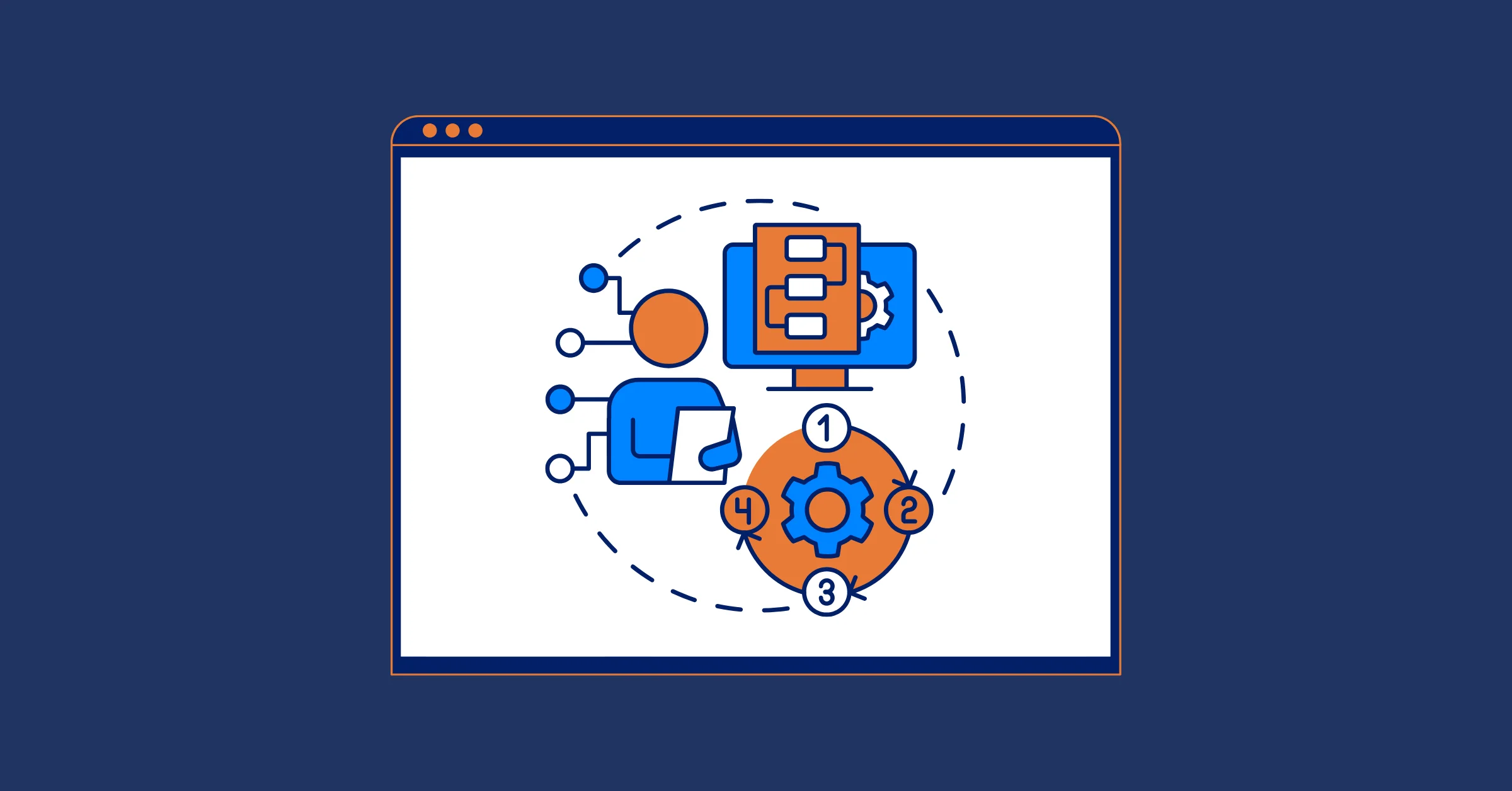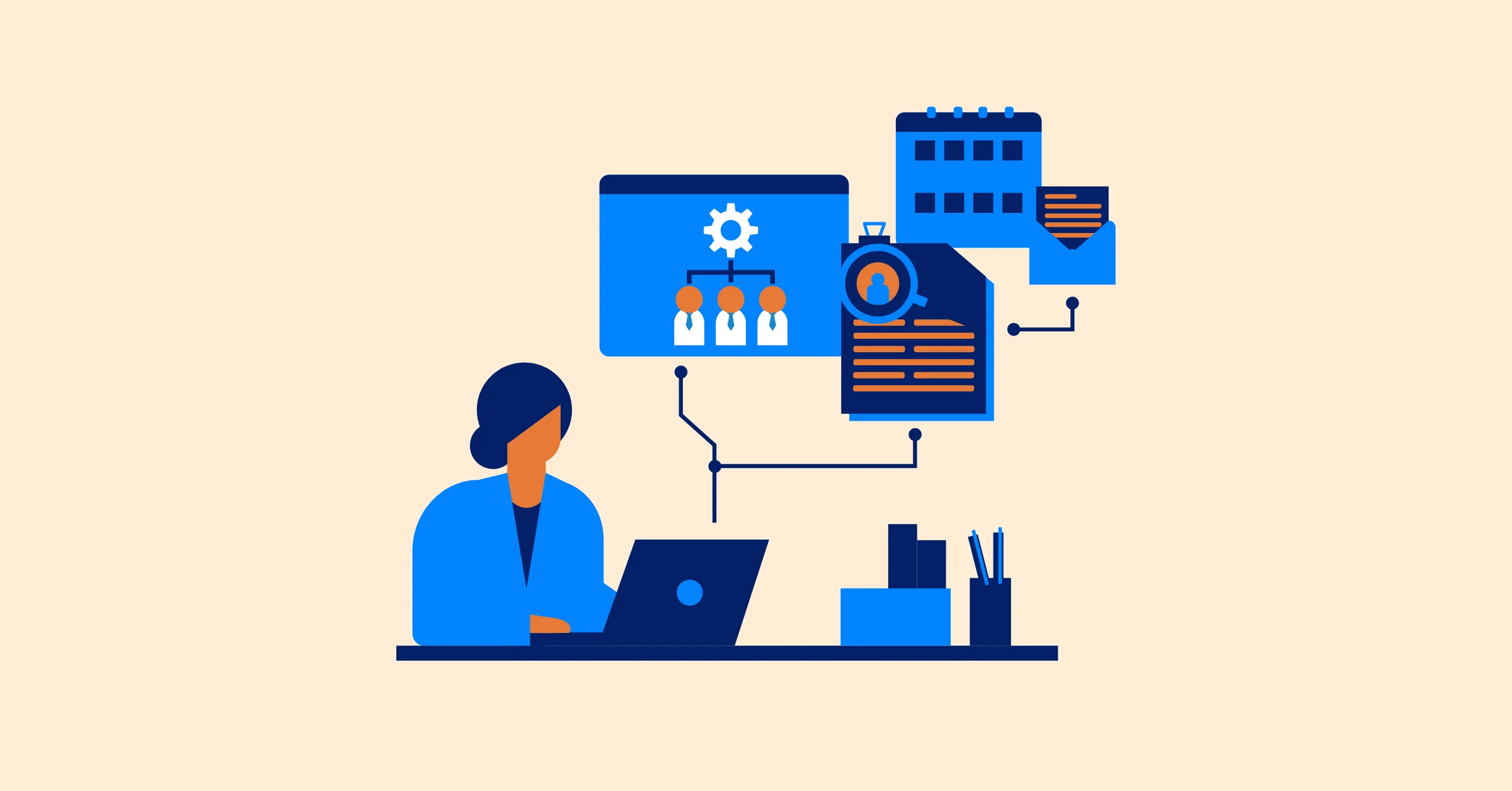Resource Management Unpacked: Key Definition, Must-Know Terms & Proven Techniques
Learn to explain resource management effectively with key terms, techniques, and tips for success. Explore common types of resources in project management and understand the vital role of a resource manager in driving project efficiency and success.
In the world of project management, one of the most critical aspects is ensuring that resources are properly managed. Whether you’re working on a small team or managing a large-scale project, effective resource management can mean the difference between success and failure. It’s not just about assigning people to tasks but also about understanding and leveraging all the resources you have at your disposal.
In this blog, we’ll explain resource management, break down key terms you should understand, explore common types of resources in project management, and offer proven techniques for managing resources effectively. By the end, you will have a deeper understanding of resource management and how to implement it for smoother, more efficient projects.
What is Resource Management?
To explain resource management, we first need to define it. Resource management in project management refers to the process of planning, allocating, and managing resources to ensure that the project progresses smoothly and is completed on time, within budget, and to the required quality standards.
In simpler terms, resource management is about ensuring that the right resources (such as people, money, tools, and time) are available and used effectively for each task. The primary goal is to prevent resource shortages, minimize waste, and optimize the productivity of your team and other resources. It’s all about balancing competing demands and allocating resources in a way that optimizes the overall success of the project.
Why is Resource Management Important?
Effective resource management is crucial because projects rarely have unlimited resources. Mismanagement can lead to:
- Delays: Projects take longer to complete when resources are not adequately allocated.
- Cost Overruns: Poor resource allocation can result in overspending or mismanagement of funds.
- Burnout: When resources, especially human resources, are stretched too thin, burnout can occur, leading to decreased productivity and morale.
Good resource management helps ensure that projects are completed efficiently, reducing these risks and leading to more successful outcomes.
Is it important to have resource planning? Here’are what you need to know.
Common Types of Resources in Project Management
To explain resource management fully, it’s important to understand the types of resources involved in a project. These can be broadly categorized into several groups:
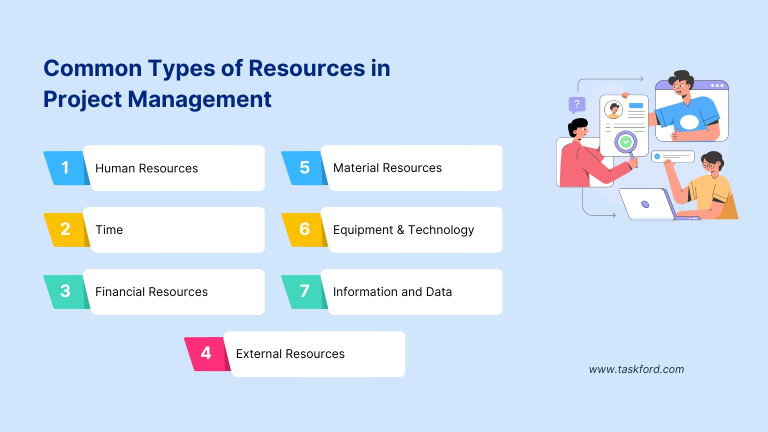
1. Human Resources
Human resources are the people who work on the project. They are the most valuable resource in most projects, as they bring skills, knowledge, and effort to accomplish tasks. Managing human resources involves:
- Assigning the right people to the right tasks based on their skills, availability, and experience.
- Balancing workloads to avoid burnout and maintain productivity.
2. Time
Time is an invaluable resource, and it’s often the most constrained resource in projects. Proper time management ensures that tasks are completed within deadlines and that resources are allocated efficiently. Project timelines, milestones, and deadlines must be carefully planned and managed.
3. Financial Resources
Financial resources refer to the budget allocated to the project. This includes funds for labor, materials, technology, and other expenses. Managing financial resources involves:
- Budgeting and cost management: Ensuring that the project stays within budget while covering all necessary expenses.
- Contingency funds: Reserving extra funds for unforeseen expenses.
4. Material Resources
Material resources are the physical goods required to execute a project. This could include raw materials, tools, equipment, and supplies. Managing these resources involves ensuring that materials are available when needed and that they are used efficiently without excess.
5. Equipment and Technology
Technology is essential for most modern projects. Managing technology resources includes ensuring that the required software and hardware are available, functional, and up to date. For example, if you're working on a software project, having the right development tools is key.
6. Information and Data
In many projects, information is a resource that’s just as important as human or financial resources. Managing data and information includes:
- Collecting and storing essential project data.
- Ensuring that the data is accessible for decision-making.
- Using data to track progress and inform future decisions.
7. External Resources
External resources refer to those assets or services that come from outside the organization, such as contractors, vendors, or consultants. Proper management of these resources involves:
- Clear contracts and agreements: Ensuring external partners deliver as expected.
- Timely coordination to avoid delays.
Key Resource Management Terms You Should Know
There are a number of essential terms that will help you better explain resource management and understand the concepts involved. These terms form the foundation of resource management in project management:
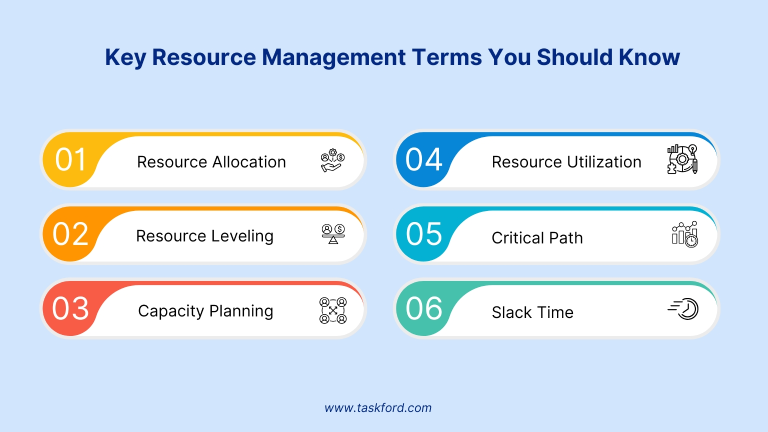
1. Resource Allocation
Resource allocation is the process of assigning available resources (people, time, materials, etc.) to specific tasks or projects. Proper allocation ensures that each task gets the necessary resources to be completed effectively.
2. Resource Leveling
Resource leveling is about adjusting resources to ensure that no resource is over-allocated or underutilized. If a task is taking longer than expected or is behind schedule, resource leveling can help redistribute resources to meet deadlines without overburdening anyone.
3. Capacity Planning
Capacity Planning is the process of estimating the future resource needs of a project. It helps anticipate the amount of resources required at each phase of the project to ensure that the team can meet project deadlines and goals.
4. Resource Utilization
Resource utilization measures how efficiently resources are being used. High resource utilization means resources are being used effectively to meet project objectives, while low utilization could indicate that resources are idle or underused.
5. Critical Path
The critical path refers to the sequence of tasks that determines the overall duration of a project. Managing resources effectively along the critical path ensures that the most important tasks are completed on time.
6. Slack Time
Slack time is the amount of time a task can be delayed without affecting the overall project schedule. Managing slack time ensures that tasks can accommodate minor delays without disrupting the entire project timeline.
Proven Techniques for Effective Resource Management
Now that we’ve covered the basics, let’s take a look at some proven techniques for effective resource management. These techniques help ensure that resources are used efficiently and projects are completed on time:
1. Prioritization
In any project, tasks have varying levels of urgency. Prioritization ensures that resources are allocated first to the most critical tasks. By focusing resources on high-priority tasks, you ensure that key milestones are achieved without unnecessary delays.
2. Forecasting Resource Needs
Effective resource management involves predicting future resource needs. By analyzing past data and trends, you can forecast which resources will be required at specific stages of the project. Forecasting helps prevent shortages and ensures that resources are available when needed.
3. Resource Scheduling
Creating a detailed schedule for resources ensures that they are used at the right time and in the right way. Tools like Gantt Chart resource histograms, and scheduling software can help map out timelines and allocate resources effectively.
4. Utilizing Technology
Modern project management tools, like TaskFord and other resource management software, can automate many aspects of resource management. These tools allow you to track resource usage in real time, make adjustments as needed, and maintain visibility across the entire project.
5. Monitoring and Adjusting
Resource management isn’t a one-time task; it’s an ongoing process. Regularly monitoring resource utilization helps you identify areas where adjustments may be needed. Tracking progress, workload, and budget allows you to make informed decisions and adapt to unforeseen challenges.
6. Flexibility and Adaptability
Projects often change unexpectedly. Being flexible in your resource management approach means you can adapt to new challenges, whether it’s reallocating resources in response to shifting priorities or adjusting schedules due to unforeseen circumstances.
Resource Manager Roles and Responsibilities
One of the key players in resource management is the resource manager. Their role is to ensure that resources are allocated efficiently, tracked properly, and used effectively throughout the project. Here are the main responsibilities of a resource manager:
1. Resource Allocation
The resource manager is responsible for ensuring that the right resources are assigned to the right tasks at the right time. This involves assessing the project needs, understanding resource availability, and ensuring that resources are allocated optimally.
2. Monitoring and Tracking
Once resources are allocated, the resource manager needs to monitor their usage and ensure they are being utilized efficiently. This includes tracking progress, managing workload, and identifying potential issues before they become critical.
3. Forecasting and Planning
A resource manager also needs to predict future resource needs and plan accordingly. This involves assessing upcoming project phases and ensuring that the required resources are available when needed.
4. Conflict Resolution
Conflicts can arise when resources are limited or stretched too thin. The resource manager’s role includes resolving these conflicts and finding solutions to ensure that all tasks are completed within the available resources.
5. Collaboration with Other Teams
Resource managers work closely with project managers and team leads to ensure that resources align with project goals. They collaborate to ensure that resources are used effectively and that any potential issues are addressed in a timely manner.
How to Manage Your Resources with TaskFord
When it comes to effective resource management, using the right tools can make all the difference. TaskFord, a comprehensive project management and specialized resource planning platform, is designed to help teams of all sizes optimize their resources, streamline workflows, and deliver successful projects.
Here’s how you can manage your resources effectively with TaskFord:
1. Capacity and Availability Planning
Effective resource management starts with understanding your team's availability. TaskFord’s capacity planning features allow you to:
- Plan Individual Capacity: TaskFord lets you plan resource allocation based on each team member's skills. This ensures that resources are assigned to tasks where they can provide the most value.
- Account for Holidays and Time Off: With TaskFord, you can easily track and plan for days off, holidays, and other events that might affect resource availability. This ensures that you never over-schedule your team, preventing burnout and ensuring that each team member has the time they need.
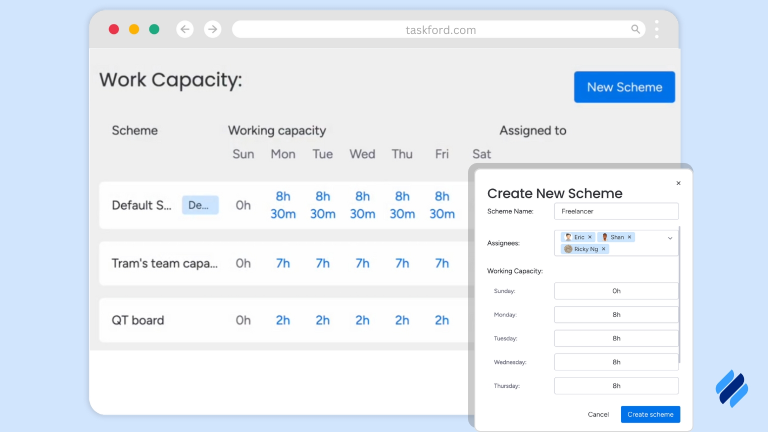
2. Resource and Workload Allocation
Balancing workloads and ensuring that resources are distributed efficiently across projects is key to maintaining productivity. TaskFord helps you:
- Distribute Resources Across Projects, Programs, or Departments: TaskFord makes it easy to allocate resources to multiple projects or departments. This feature ensures that resources are used optimally and that no project is left without sufficient support.
- Maintain Accountability and Foster Collaboration: By clearly assigning resources to specific projects or tasks, TaskFord ensures accountability. It also promotes collaboration, as team members can see what their colleagues are working on, making it easier to communicate and work together.
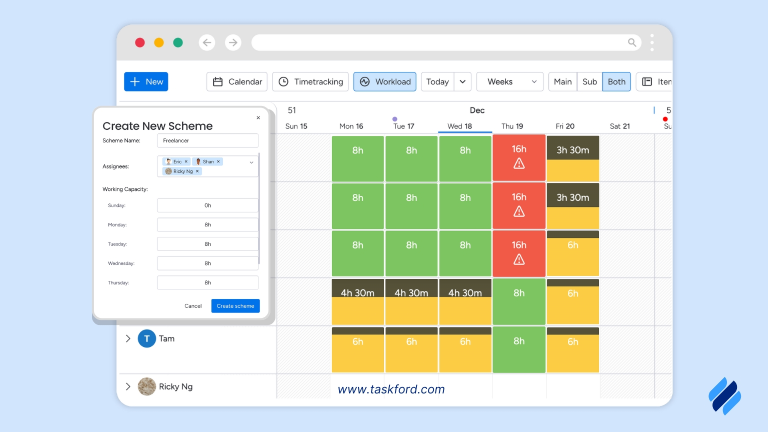
3. Task Scheduling and Assignment
Scheduling tasks effectively is central to keeping a project on track. TaskFord’s intuitive tools allow for:
- Task Assignment and Scheduling: With TaskFord’s team board, you can assign and schedule tasks with ease. The visual board provides a clear overview of each team member’s responsibilities and deadlines, helping both managers and team members stay on the same page.
- Clear Visibility: TaskFord ensures that everyone involved in the project has clear visibility into the tasks that need to be completed. Managers can see what’s happening in real-time, and team members can prioritize their work effectively.
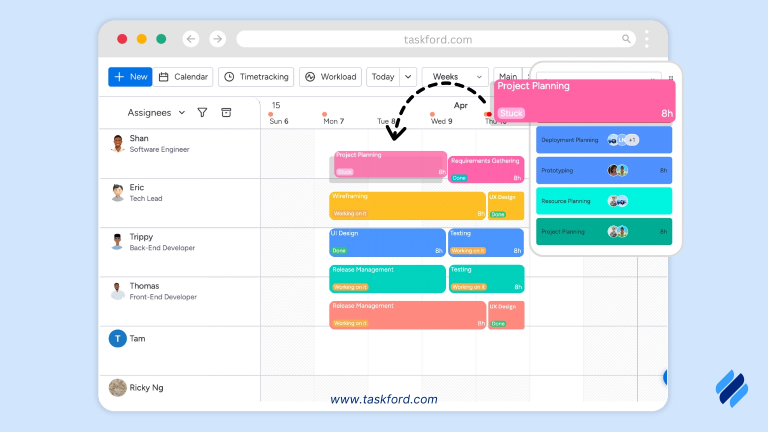
4. Holiday and Event Planning
Managing your team’s schedules isn’t just about allocating work; it’s also about understanding the impact of time off. TaskFord allows you to:
- Plan for Holidays and Events: Easily integrate holidays and other scheduled events into your project timelines. By accounting for these factors, TaskFord helps prevent scheduling conflicts and ensures that projects remain on track, even during periods of low resource availability.
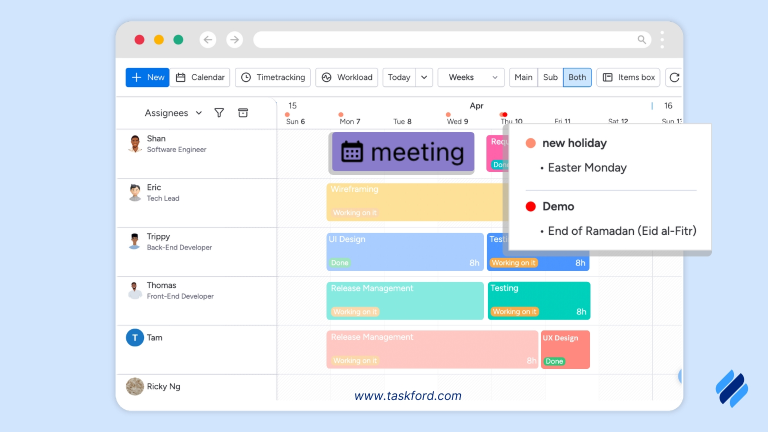
Discover more: Leave and Vacation Management solutions with TaskFord
Why TaskFord is Your Ideal Resource Management Solution
Managing resources manually can quickly become overwhelming, especially when dealing with complex schedules, multiple projects, and diverse teams. TaskFord doesn’t eliminate the need for planning and monitoring, but it makes it a lot easier to stay on top of things. By using TaskFord, you get:
- Clear Visibility of Availability: You can easily see who’s available, when, and for how long, helping you avoid overloading team members or missing deadlines.
- Balanced Workloads: With resource allocation tools, you can make sure tasks are evenly distributed across the team, promoting a healthy work environment and reducing bottlenecks.
- Efficient Scheduling: TaskFord’s intuitive board helps you assign and track tasks, so everyone knows what’s expected and by when, without confusion.
TaskFord helps keep resource management organized and more manageable, helping you and your team stay focused on what really matters—getting the work done efficiently and on time.
Conclusion
In summary, explaining resource management involves understanding the different types of resources, knowing key terms, and applying proven techniques to ensure that your project runs smoothly. By effectively managing human resources, time, finances, materials, and technology, you can prevent delays, reduce costs, and avoid burnout. Using tools like TaskFord can simplify this process, making it easier to allocate, schedule, and track resources across projects. With proper resource management, you set your projects up for success.
Ready to take your resource management to the next level? Join our waitlist now! for an exclusive free trial and get early access to TaskFord! Be the first to experience the power of TaskFord and transform how you manage your resources.
Further Reading:
- How Operations Teams Leverage TaskFord for Resource Planning in Project Management
- The Best Resource Planning Template for Project Managers
- Resource Breakdown Structure (RBS) The Ultimate Guide for Project Managers
Making work simpler,
smarter, and more connected
Join our waitlist and be notified first.

Related Blog
Subscribe for Expert Tips
Unlock expert insights and stay ahead with TaskFord. Sign up now to receive valuable tips, strategies, and updates directly in your inbox.





